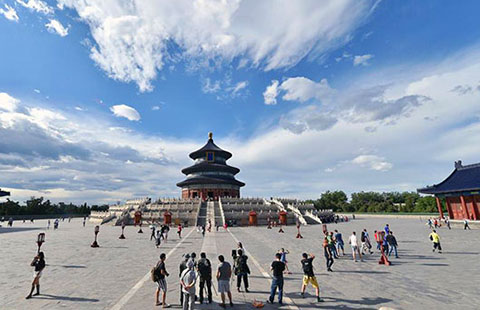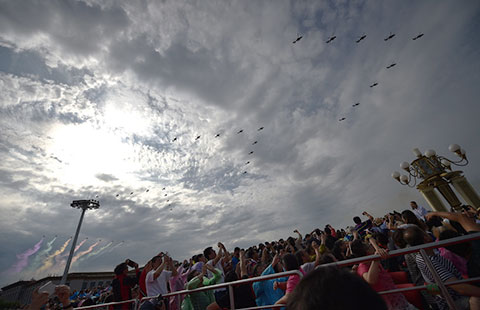First Chinese murals might date back more than 4,000 years
By Ma Lie in Xi'an (chinadaily.com.cn) Updated: 2015-08-19 14:14
 |
|
A close-up photo shows a piece of a mural. [Photo/chinadaily.com.cn] |
A group of recently-discovered murals hinted that the basic production process and rendering techniques used to make Chinese murals might be more than 4,000 years old.
Since 2011, continuous excavations by Chinese archaeologists have found some 200 pieces of colorful murals in the Shimao Ruins, the largest completed urban construction in China dating from the late Neolithic (4,600 - 4,000 years ago) age in Shenmu county, Shaanxi province.
The Shaanxi Provincial Institute of Archaeology recently issued a report on the discovery, saying that following lab experiments and analysis, the basic production process and rendering techniques used on the murals in Shimao Ruin were similar to those used to make frescoes dating from the Han Dynasty (202 BC – 220 AD) and later dynasties. This indicates that the process and techniques were in use more than 4,000 years ago.
Archaeologists found traces of pigment layers on a mural that indicates brush-like tools were used to make the mural, even though the brush is considered to have been invented by Meng Tian, a general in the Qin Dynasty (221 – 207 BC).
"The history of using the brush by Chinese people will be rewritten if the tool used to make the mural is confirmed to be a brush," experts said.
The experts also noted that the types of pigments used for the murals were made of glauconite, which was found in the sea, but the Shimao Ruin is located on the Loess Plateau far from the sea.
"The source of the pigment is also a concerned matter for further research," experts said.
According to the historical record, Chinese murals were used to decorate housesfrom early on and used for tombs as early as the Western Zhou Dynasty (1046 – 771 BC). The murals were found mainly in North China, which indicates that the region was the birthplace of the Chinese mural, experts said.
- Delegation salutes Tibet anniversary
- Officials are told to act as anti-graft watchdogs
- Great Wall safeguarded in united action
- Vice minister pledges more efforts to improve air quality
- Beijing’s efforts to control air pollution start to pay off
- China's military committed to reform
- Netizens rip singer over baby photos
- Central govt's growing support for Tibet
- Monument to be built on Tianjin blast site
- China and Russia seal raft of energy deals







